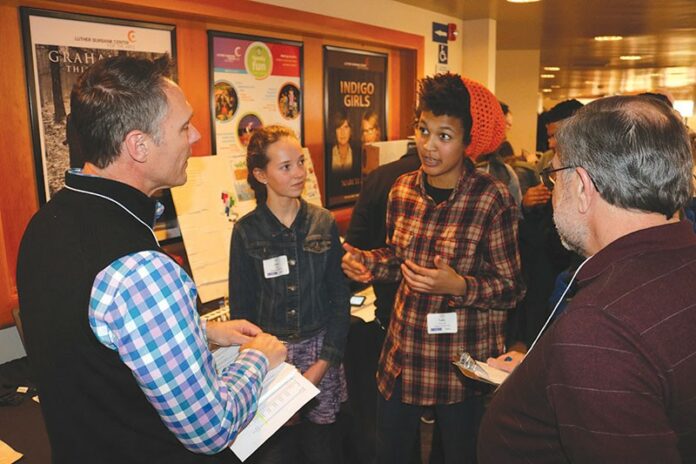Here’s a question: Think back to your first years of school, from kindergarten through high school. What do you recall from, say, sixth grade?
Sure, maybe you remember your first crush. You might even recall a class bully or your teacher’s name.
Most people have vivid memories of coaches and athletic events, of musical performances, of friendships and everything not part of a class. How do we make the learning experience memorable and a powerful inspiration for later life?
That is a major focus of an emerging direction in innovative education, STEAM. The acronym stands for Science, Technology, Engineering, Art, and Mathematics, and the first major exhibition of K-12 student projects encompassing these fields was held last month at the Luther Burbank Center for the Arts in Santa Rosa.
The Sonoma County Office of Education has held science fairs before. Typically they are well-defined efforts in a single area of expertise done by a single student, with guidance from a faculty mentor, described in a triptych poster-board display. They are judged and ranked by qualified evaluators, and if they score highly enough, move on to the next level.
But to what degree do these showcases inspire students to pursue investigations into the unknown, or perhaps into their own ability to express provocative ideas in novel ways for others? Likely, the answer would be, not so much.
Now consider last month’s Synopsys Outreach Foundation-Sonoma County STEAM Showcase, where students explored any idea that caught their interest. This could have been a new idea for which students designed an experiment or exploration in a field of knowledge to which they applied their own creative talents.
It was not a competition with winners going on to the next level and losers left behind. Evaluators paid significant attention to students’ efforts in explaining and promoting their work, including how their project led to further interest and application, rather than just being a standalone project for the event.
One student presented her investigation into the environmental challenges that sea turtles face. Not too challenging, perhaps. But she included a 20-minute presentation to evaluators, complemented by a computer slideshow, flawlessly delivered without notes. The student also included several models of physical evidence, and even a beautiful sheet-metal sculpture that she welded using the hood of an old VW—she had her uncle first teach her how to weld. She also raised money for a sea turtle conservancy in South Carolina. And, oh yes, English was her second language.
Where might this all lead? What if cross-disciplinary projects, begun in schools with curricula that encouraged STEAM-like projects, such as those on display at the Luther Burbank exhibition were to become the norm? We can only imagine the worlds our children might create.
Nelson ‘Buzz’ Kellogg is a humanities professor emeritus at Sonoma State University.











